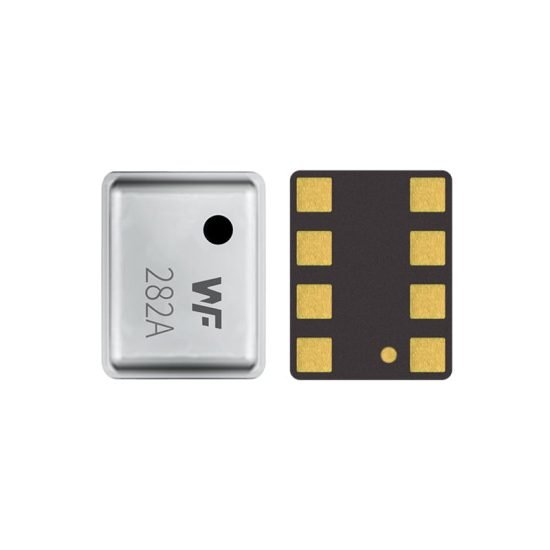Catálogo
Barometric pressure sensors in navigation systems provide vertical reference and environmental awareness. When GPS is limited, stable pressure-based altitude changes can deliver short-term reliable vertical displacement data for dead-reckoning. During transitions between indoor and outdoor spaces, barometric data combined with IMU and filtering significantly improves positioning continuity and floor detection.
1. Function and Principles
How Barometric-Aided Dead-Reckoning Works
Barometric-aided dead-reckoning converts pressure changes into altitude shifts, which are then fused with GPS and IMU time-series data. When GPS is blocked in tunnels or indoor areas, high-resolution barometers track altitude trends in real time. With temperature compensation and filters such as Kalman filters, they suppress weather noise and airflow disturbance, maintaining short-term stable height readings. A sampling rate of 10–50Hz is often used to balance response speed and power use.

2. Accuracy and Data Fusion
Improving Positioning Continuity with GPS and IMU Fusion
Barometric absolute altitude is influenced by the atmosphere, temperature drift, and local pressure variation. Stability improves through temperature compensation, long-term baseline calibration, and short-term filtering. In sensor fusion, frameworks such as Kalman or Extended Kalman filters use barometric altitude as an observation, merging it with IMU acceleration and angular velocity. This maintains consistent 3D trajectory and floor continuity when GPS is weak or unstable.
3. Indoor-Outdoor Switching and Floor Recognition
Floor Detection Indoors and Continuous Outdoor Dead-Reckoning
Indoors, barometric sensors detect floor changes through small measurable pressure differences, with time-series analysis and thresholding enabling real-time floor recognition. In outdoor-to-indoor transitions, barometric altitude trends and IMU displacement are combined to prevent altitude jumps caused by GPS loss. Short-term disturbances from HVAC airflow or opening doors are corrected by smoothing and outlier rejection to improve stability.
4. Hardware and System Integration Requirements
MEMS Barometers in Wearable Navigation Hardware
Barometers for dead-reckoning must offer high resolution, low noise, temperature compensation, and a stable baseline. Their casing should allow fast pressure response and be resistant to moisture. For wearables, size, power use, and sample rate are key factors. Models such as WF282A, with built-in temperature sensing and digital I2C/SPI output, are commonly used. With proper ADC and power design, they can run reliably at 10–50Hz and support on-site calibration.
5. Algorithm Implementation and Engineering Considerations
Processing Barometric Data and Managing Errors in Navigation
In algorithms, barometric altitude is used as an observation fused with IMU state estimates, while managing slow drift and short-term noise. Key methods include baseline pressure modelling, temperature correction, short-term filtering for weather effects, and periodic GPS correction to limit error growth. Practical design must balance real-time performance with computing load. Adaptive filtering and recalibration triggers keep navigation stable during environmental changes.
Conclusão
Barometric sensors provide vertical reference in indoor and outdoor dead-reckoning, ensuring continuous trajectory and floor detection even when GPS is weak. Reliable use requires sensor selection (high resolution, low noise, temperature compensation), hardware integration (sampling rate, packaging, digital interface), and algorithm design (Kalman fusion, baseline modelling, noise rejection). Devices such as WF282A give stable output for wearables and mobile systems, enabling seamless indoor-outdoor positioning.
A introdução acima apenas arranha a superfície das aplicações da tecnologia de sensores de pressão. Continuaremos a explorar os diferentes tipos de elementos sensores usados em vários produtos, como funcionam e suas vantagens e desvantagens. Se desejar mais detalhes sobre o que é discutido aqui, você pode verificar o conteúdo relacionado posteriormente neste guia. Se você está sem tempo, também pode clicar aqui para baixar os detalhes deste guia Dados PDF do produto do sensor de pressão de pressão de ar.
Para obter mais informações sobre outras tecnologias de sensores, por favor Visite nossa página de sensores.
